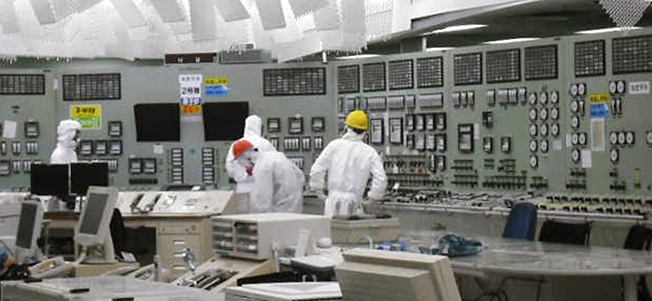
TOKYO – Workers discovered new pools of radioactive water leaking from Japan's crippled nuclear complex, officials said Monday, as emergency crews struggled to pump out hundreds of tons of contaminated water and bring the plant back under control.
Officials believe the contaminated water has sent radioactivity levels soaring at the coastal complex and caused more radiation to seep into soil and seawater. Crews also found traces of plutonium in the soil outside of the complex on Monday, but officials insisted there was no threat to public health.
Plutonium — a key ingredient in nuclear weapons — is present in the fuel at the complex, which has been leaking radiation for over two weeks, so experts had expected some to be found once crews began searching for evidence of it this week.
[Related: 32 years: Three Mile Island anniversary]
Tokyo Electric Power Co. official Jun Tsuruoka said only two of the plutonium samples taken Monday were from the leaking reactors. The other three were from earlier nuclear tests. Years of weapons testing in the atmosphere left trace amounts of plutonium in many places around the world.
The Fukushima Dai-ichi power plant, 140 miles (220 kilometers) northeast of Tokyo, was crippled March 11 when a tsunami spawned by a powerful earthquake slammed into Japan's northeastern coast. The huge wave engulfed much of the complex, and destroyed the crucial power systems needed to cool the complex's nuclear fuel rods.
Since then, three of the complex's six units are believed to have partially melted down, and emergency crews have struggled with everything from malfunctioning pumps to dangerous spikes in radiation that have forced temporary evacuations.
Confusion at the plant has intensified fears that the nuclear crisis will last weeks, months or years amid alarms over radiation making its way into produce, raw milk and even tap water as far away as Tokyo.
The troubles at the Fukushima complex have eclipsed Pennsylvania's 1979 crisis at Three Mile Island, when a partial meltdown raised fears of widespread radiation release, but is still well short of the 1986 Chernobyl disaster, which killed at least 31 people with radiation sickness, raised long-term cancer rates, and spewed radiation across much of the northern hemisphere.


